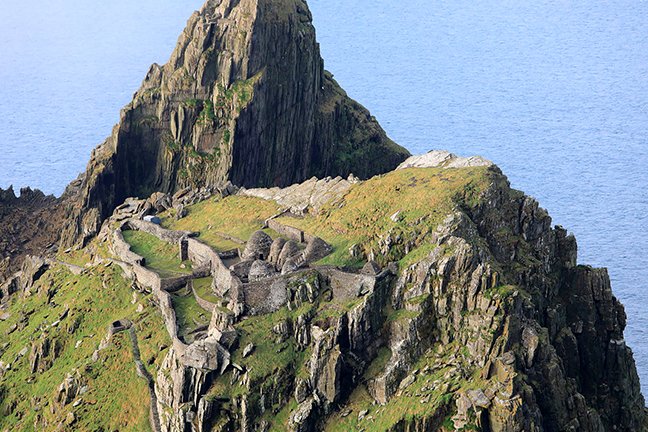Home / History / Irish History / The Book of Kells: Exploring an Irish Medieval Masterpiece / The physical setting of the Book of Kells
This article is from the free online
The Book of Kells: Exploring an Irish Medieval Masterpiece


Reach your personal and professional goals
Unlock access to hundreds of expert online courses and degrees from top universities and educators to gain accredited qualifications and professional CV-building certificates.
Join over 18 million learners to launch, switch or build upon your career, all at your own pace, across a wide range of topic areas.

 Fig 1. Skellig Michael, Failte Ireland content pool. Photographer: Valerie O’ Sullivan.
Fig 1. Skellig Michael, Failte Ireland content pool. Photographer: Valerie O’ Sullivan.  Fig 2. Clonmacnoise, County Offaly, Ireland. Photo: Courtesy of the National Monuments Service, Department of Arts, Heritage and the Gaeltacht, Ireland
Fig 2. Clonmacnoise, County Offaly, Ireland. Photo: Courtesy of the National Monuments Service, Department of Arts, Heritage and the Gaeltacht, Ireland
 Fig 3. Nendrum monastery, surrounded by three concentric enclosures with the churches at the centre. By Davidcorkill – Own work
Fig 3. Nendrum monastery, surrounded by three concentric enclosures with the churches at the centre. By Davidcorkill – Own work  Fig 4. Church buildings at Glendalough, Co. Wicklow. Photo: Rachel Moss.
Fig 4. Church buildings at Glendalough, Co. Wicklow. Photo: Rachel Moss.  Fig 5. Early church at Kilcummin, Co. Mayo, showing the small windows in the south and east walls that lit the altar. Photo: Rachel Moss.
Fig 5. Early church at Kilcummin, Co. Mayo, showing the small windows in the south and east walls that lit the altar. Photo: Rachel Moss.
 Fig 6. St Ciaran’s ‘house’ at Clonmacnoise, Co. Offaly. A small chapel used to store the saint’s relics. Photo: Rachel Moss.
Fig 6. St Ciaran’s ‘house’ at Clonmacnoise, Co. Offaly. A small chapel used to store the saint’s relics. Photo: Rachel Moss.
 Fig 7. The round tower at Glendalough. Photo: Rachel Moss.
Fig 7. The round tower at Glendalough. Photo: Rachel Moss.
 Fig 8. The ‘Market’ cross at Kells. Photo: Collection of the Department of History of Art and Architecture, Trinity College.
Fig 8. The ‘Market’ cross at Kells. Photo: Collection of the Department of History of Art and Architecture, Trinity College.





